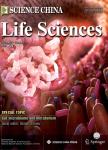Optopharmacological control of TRPC channels by coumarin-caged lipids is associated with a phototoxic membrane effect
Optopharmacological control of TRPC channels by coumarincaged lipids is associated with a phototoxic membrane effect作者机构:Institute of BiophysicsMedical University of GrazBio Tech Med-GrazHarrachgasse 21Graz 8010Austria Institute of ChemistryUniversity of GrazNAWI GrazBio Tech Med-GrazHeinrichstrasse 28Graz 8010Austria
出 版 物:《Science China(Life Sciences)》 (中国科学(生命科学英文版))
年 卷 期:2016年第59卷第8期
页 面:802-810页
核心收录:
学科分类:0710[理学-生物学] 0830[工学-环境科学与工程(可授工学、理学、农学学位)] 07[理学] 071009[理学-细胞生物学] 09[农学] 0901[农学-作物学] 090102[农学-作物遗传育种]
基 金:supported by the Austrian Science Fund(FWFW 1226-B18)
主 题:caged diacylglycerols TRPC channels Ca2+ signaling optopharmacology
摘 要:Photouncaging of second messengers has been successfully employed to gain mechanistic insight of cellular signaling path- ways. One of the most enigmatic processes of ion channel regulation is lipid recognition and lipid-gating of TRPC channels, which represents pivotal mechanisms of cellular Ca2+ homeostasis. Recently, optopharmacological tools including caged lipid mediators became available, enabling an unprecedented level of temporal and spatial control of the activating lipid species within a cellular environment. Here we tested a commonly used caged ligand approach for suitability to investigate TRPC sig- naling at the level of membrane conductance and cellular Ca2+ handling. We report a specific photouncaging artifact that is triggered by the cage structure coumarin at UV illumination. Electrophysiological characterization identified a light-dependent membrane effect of coumarin. UV light (340 nm) as used for photouncaging, initiated a membrane conductance specifically in the presence of coumarin as low as 30 pmol L-1 concentrations. This conductance masked the TRPC3 conductance evoked by photouncaging, while TRPC-mediated cellular Ca2+ responses were largely preserved. The observed light-induced membrane effects of the released caging moiety may well interfere with certain cellular functions, and prompt caution in using couma- fin-caged second messengers in cellular studies.



